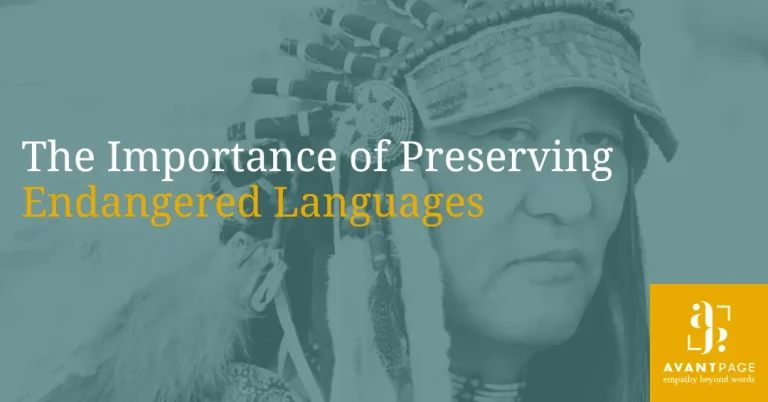How Translation Services for Families Improve Access to Care
For so many of us—whether we’re caring for a child, a foster or adopted loved one, an aging grandparent, a live-in relative, a friend, or a trusted caregiver—getting medical care is rarely a solo experience. It often involves the people around us, and that means communication is a shared responsibility. Patients need to understand their care, of course—but when others are involved, they should be part of the conversation too.
No matter what your family looks like, clear communication in healthcare is essential. And for families who speak a language other than English, that often means having access to translation services for families—not just during doctor’s appointments, but throughout the care journey.
Imagine a parent bringing their child to a clinic, hospital, or emergency room. They deserve to feel confident they’ll understand the diagnosis, treatment plan, and next steps—and that they’ll be understood in return. But when English isn’t the family’s primary language, that experience can quickly become overwhelming. Miscommunication can lead to missed diagnoses, medication errors, and serious health risks.
That’s where translation services for families make all the difference. These services ensure that everyone involved in a patient’s care can understand, ask questions, follow instructions, and make informed decisions. They don’t just support better communication—they build trust, safety, and inclusion.
For millions of families across the U.S., this isn’t optional. It’s essential.
Families Deserve More than Just Words
Language barriers can make even the most routine medical visits stressful. Parents may struggle to understand what a provider is saying about their child’s condition. Grandparents might not follow after-care instructions after surgery. A caregiver could misinterpret medication dosages or fail to follow discharge instructions correctly.
Without access to translation, families may struggle to make informed decisions. The result is often worse health outcomes and higher costs for both families and providers. But when families can clearly communicate with their care teams, they’re more likely to pursue preventive care, follow treatment plans, communicate openly with providers, and make the confident, informed decisions about their health that ultimately improve health outcomes.
You can learn more about how these services work by visiting our page on translation services and healthcare translation solutions.
What the Law Requires—and Why It Matters
It’s not just good practice to offer language support—it’s the law. Under Title VI of the Civil Rights Act of 1964 and Section 1557 of the Affordable Care Act, healthcare organizations that receive federal funding are required to provide meaningful access to individuals who are limited English proficient (LEP).
This includes offering professional translation and interpretation services free of charge. According to HHS Office for Civil Rights, organizations must take reasonable steps to ensure LEP individuals can understand and access the services they need.
Failing to meet these standards can result in legal consequences—and more importantly, puts families at risk of not receiving effective care.
The Real-World Impact on Families
For families, the absence of reliable language services creates a domino effect. A single misunderstanding can lead to a missed follow-up, which turns into a preventable emergency room visit. A caregiver who doesn’t understand a discharge plan may unknowingly worsen a loved one’s recovery.
In contrast, translation services for families build trust. They ensure parents can confidently consent to treatment. They help patients adhere to care plans. They give families the voice and agency they need to be active participants in their health—not just passive recipients.
Language access is also about dignity. Every family deserves to understand their own medical journey, regardless of the language they speak.
Moving Forward: How Providers Can Improve Language Access
Healthcare providers don’t have to overhaul everything overnight, but there are clear starting points. Working with a professional translation partner can help organizations assess where gaps exist and how to effectively close them. That could mean translating intake forms, providing access to on-demand interpreters during telehealth visits, or making sure discharge instructions are available in a patient’s preferred language.
Digital technologies are playing an increasingly vital role in improving access to healthcare for diverse families. Remote interpreting technology platforms, AI-driven translation tools like machine translation post-editing (MTPE), multilingual client portals, and telemedicine services are all helping bridge the gap—especially for families in rural or underserved areas. These tools aren’t meant to replace human connection, but they serve as valuable extensions, ensuring more inclusive communication and care.
At Avantpage, we offer global language services tailored specifically for healthcare providers, enabling them to reach families in meaningful, accurate, and culturally appropriate ways. Our solutions include access to usage data and language data, helping providers understand and track the needs of their patients, making it easier to deliver care that truly resonates.
Frequently Asked Questions About Translation Services for Families in Healthcare
Who is eligible to receive translation services in healthcare settings?
Any individual with limited English proficiency (LEP) is eligible for translation or interpretation services when receiving care from healthcare organizations that receive federal funding. This includes families whose primary language is not English. These services are required under Title VI of the Civil Rights Act and Section 1557 of the Affordable Care Act, which protect patients from discrimination based on language barriers.
Are there any costs associated with translation services for families in healthcare?
No. Translation services for families in healthcare must be provided free of charge to patients with LEP when the organization receives federal funding. This includes in-person interpretation, phone or video interpretation, and translated written materials such as forms, prescriptions, and discharge instructions. According to the HHS Office for Civil Rights, these services must be readily available to ensure meaningful access.
How can families access language services during a hospital visit?
Families should inform the front desk, admissions team, or care providers that they need language support. Hospitals are expected to have protocols in place to provide interpreters on-site, over the phone, or via video. In many cases, translated materials—such as consent forms or discharge instructions—should also be available. If families are unsure, they can ask for “language assistance” or “interpreter services” at any time during their visit.
What’s the difference between translation and interpretation in healthcare?
Translation refers to converting written content (like forms or discharge instructions) from one language to another. Interpretation, on the other hand, is verbal or signed conversation and used during interactions—like doctor visits or telehealth appointments. Both services are critical components of effective language access for families.
How can healthcare providers ensure cultural competency alongside translation services?
While accurate translation is critical, cultural competency helps ensure that healthcare communication is not only understood but also respectful and relevant. Providers can work with professional language service providers who offer culturally informed translations. Training staff on cross-cultural communication and hiring multilingual personnel also strengthens this effort. Together, cultural competency and translation services for families build trust, improve patient satisfaction, and lead to better health outcomes.
Are bilingual staff allowed to interpret?
Only if they’re trained and qualified as medical interpreters. Healthcare facilities must ensure interpreters meet competency standards in medical terminology, ethics, and confidentiality. While many bilingual staff want to help, relying on untrained personnel can lead to serious miscommunications and liability risks.
When should healthcare providers use onsite interpreters vs. remote options?
Onsite interpreters are best suited for complex, sensitive, or lengthy medical conversations. When in-person support isn’t selected, video remote interpreting (VRI) or over-the-phone interpreting (OPI) can effectively support simple interactions. Ideally, all three options should be accessible, allowing patients with limited English proficiency to choose their preferred method. Providers should consider the patient’s needs, the context of care, and the complexity of the visit when selecting the appropriate modality.
Healthier Families, Stronger Communities
When healthcare is truly accessible—linguistically, culturally, emotionally—families thrive. Children receive timely, appropriate care. Parents feel supported in making medical decisions. Patients can manage chronic conditions with clarity and confidence.
The long-term benefits are powerful: improved health outcomes, lower costs, reduced disparities, and stronger trust between communities and care providers. Simply put, translation services for families aren’t a bonus—they’re the foundation of equitable care. If your organization is ready to make language access a priority, get a free quote and start building a better experience for every family you serve.
Get a Free Quote
Contact us to learn how we can be a trusted partner in your language access efforts.


